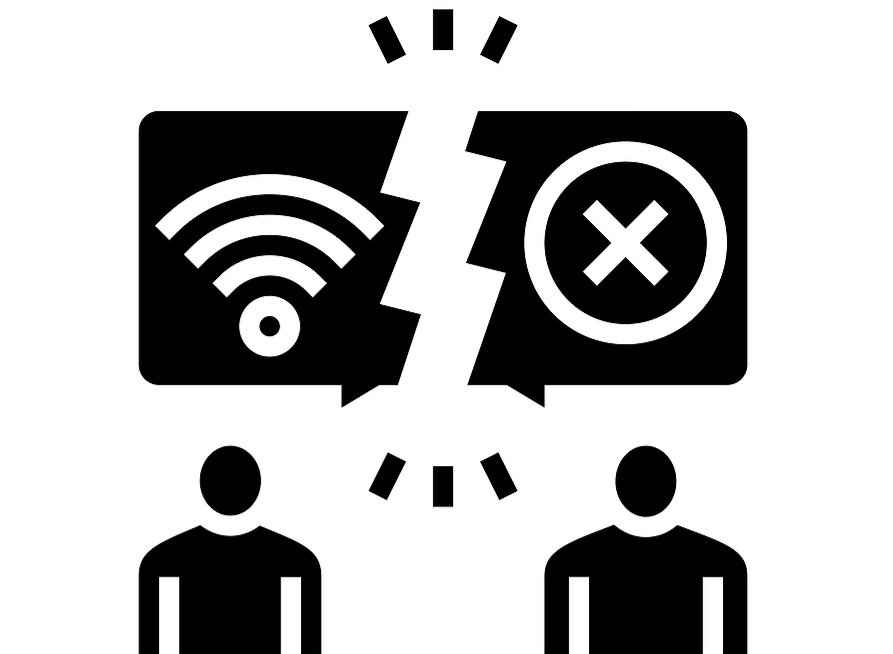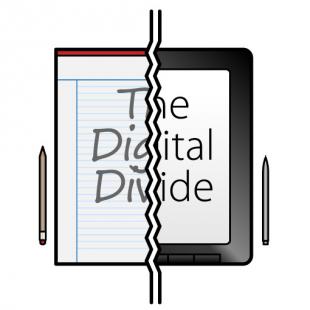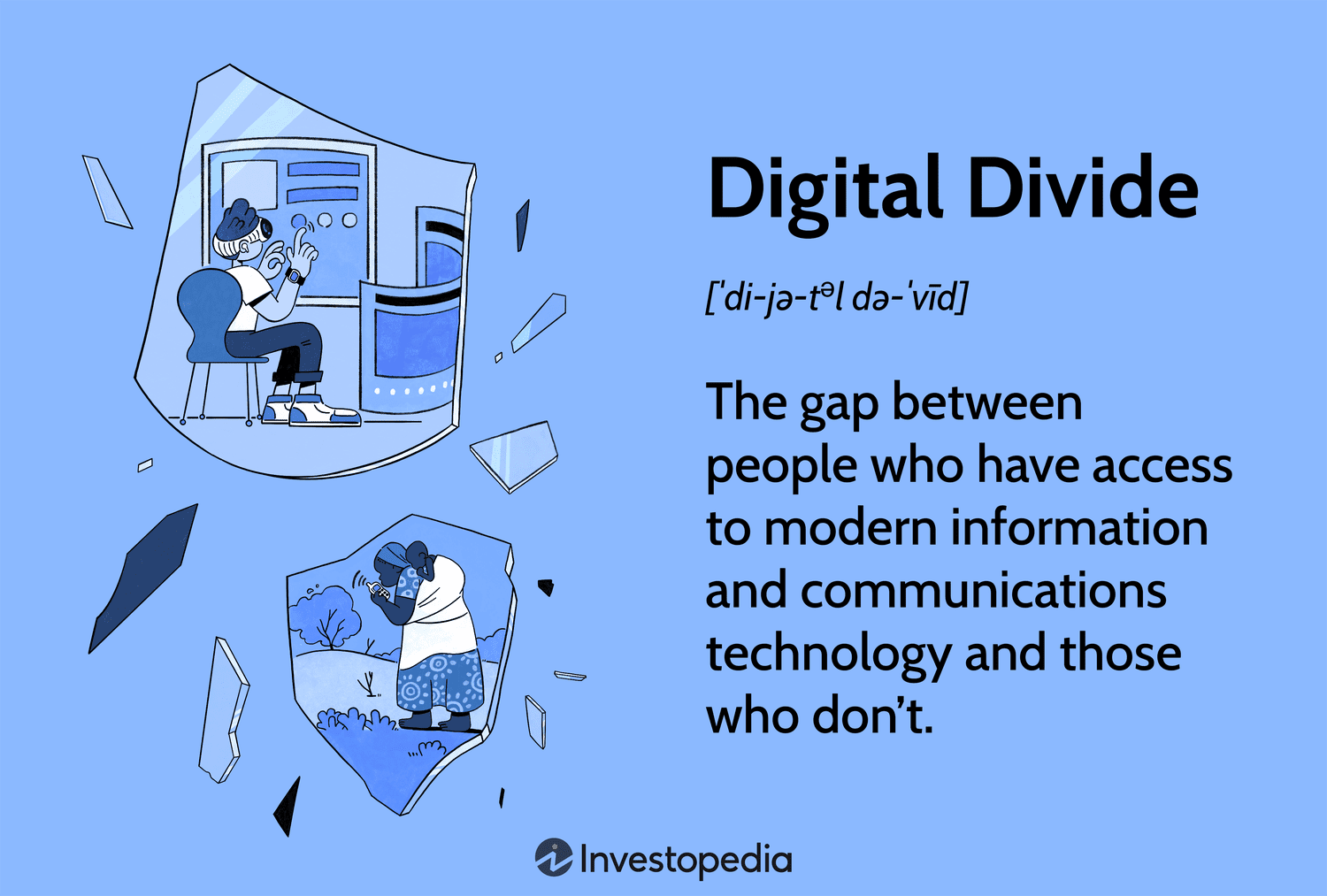The digital divide primarily impacts underprivileged and rural communities. It affects individuals with limited access to technology and broadband internet.
Navigating the digital age requires equal access to technology, yet not everyone stands on the same starting line. The digital divide, a term that highlights the gap between those who have easy access to computers and the internet and those who do not, is a pressing societal concern.
This technological chasm spans across various demographics, hitting hardest among lower-income families, rural residents, the elderly, and less developed countries. These groups often lack the necessary tools for digital literacy, which can hinder opportunities for education, employment, and social connections. Bridging this gap is essential in ensuring equitable access to information, services, and the global economy. As technology continues to advance and become even more integrated into daily life, recognizing and addressing the challenges of the digital divide is crucial for creating an inclusive digital future for all.
The Digital Divide Explained
Unveiling the true essence of the digital divide, it impacts certain sections of society more profoundly. Primarily, it affects individuals who lack access to technology and the internet, creating a significant disparity in this digital age. This includes the elderly, economically disadvantaged, rural inhabitants and those in developing countries.
The Digital Divide Explained
The term Digital Divide refers to the gap between individuals, households, businesses, and geographic areas in terms of their access to information and communication technologies. This includes differences in the use of the internet and mobile phones.
Defining the Gap
The gap defines the division between those who have access to digital technologies and those who don’t. This includes access to computers, smartphones, and high-speed internet. Factors like education, income level and geographical location can influence this divide.
Historical Context
The advent of technology has transformed our world. Still, not everyone has had equal access. The term ‘Digital Divide’ was coined in the 1990s and has been an issue of concern ever since. Major efforts are being made globally to bridge this gap.
Populations Impacted By The Divide
The digital divide affects many people worldwide. Some groups face bigger challenges than others. This section explores the ‘Populations Impacted by the Divide’.
Economic Disparities
Money plays a big role in who gets access to technology. Those with less money, often struggle to get the same tech as richer individuals. Here are key facts:
- Affordability: High costs prevent some from buying computers and paying for the internet.
- Job Opportunities: People need digital skills for many jobs. Without access, many fall behind.
- Educational Resources: Online learning needs tech. Not everyone can afford the devices for this.
Rural Vs. Urban Access
Where you live matters for internet access. Rural areas often lack the same services as cities. Look at the differences:
| Location | Internet Speed | Tech Services |
|---|---|---|
| Rural Areas | Slower | Limited |
| Urban Areas | Faster | More options |
Generational Differences
Age affects how we use technology. Younger people often adapt quicker than older adults. Here’s why:
- Digital Natives: Young ones grow up with tech, making it easier for them.
- Learning Curve: Older generations may find new technology hard to learn.
- Tech Exposure: Schools teach tech today. Many older adults did not have this chance.
Consequences Of Digital Exclusion
Many people face hurdles in our high-tech world. This is called the digital divide. Those not able to use tech can fall behind. It’s not just about not having the internet. It’s also about not knowing how to use it. Let’s talk about what happens when people get left out.
Educational Setbacks
Learning suffers without tech. Kids need computers and the internet for school. Some kids can’t do homework or research without this. They fall behind in class. This makes it hard for them to do well in school and in life. Look at how this happens:
- No access to online learning tools.
- Difficulty completing homework.
Economic Impacts
Work today needs tech skills. Jobs often ask for people who can use computers. Without these skills, finding work is tough. Even simple tasks need the internet. Look at the job hunt. If you can’t get online, you can’t find job postings. This is a table of how tech helps in jobs:
| With Tech Skills | Without Tech Skills |
|---|---|
| More job options | Fewer job options |
| Better pay chances | Less pay potential |
Social Isolation
Feeling alone is a big problem. The internet helps people stay in touch. When you can’t use the internet, keeping friendships is hard. This is especially true for older people. Without tech, they can’t talk to family far away. Young people use social media to make friends. Without it, they might feel left out. Here’s a list of how tech helps us stay connected:
- Video calls with family and friends.
- Joining online groups.

Credit: www.socialworker.com
Efforts To Bridge The Gap
The digital divide affects millions globally, creating disparities in access to technology and information. Recognizing this, various entities have engaged in efforts to bridge the gap. These initiatives include governmental policies, community-driven programs, and contributions from the private sector. Their collective aim is to ensure equitable access to digital tools and literacy, forging paths for inclusion and growth in an increasingly digital world.
Government Initiatives
Governments play a pivotal role in addressing the digital divide. They launch programs focusing on infrastructure expansion and affordability. Through subsidies, grants, and public-private partnerships, governments are setting the foundation for widespread internet connectivity. This includes rolling out broadband in remote areas, providing devices to underprivileged students, and investing in digital literacy curriculums.
- Infrastructure development in remote regions
- Financial assistance for technology purchases
- Educational programs to boost digital skills
Nonprofit And Community Programs
Nonprofits and community organizations understand local needs intimately. Their programs are tailored to empower specific groups, reducing the digital divide at a grassroots level. Initiatives include setting up community internet centers, offering free digital literacy workshops, and distributing second-hand devices to those in need.
- Community internet access points for free use
- Workshops and training for essential digital skills
- Device recycling and distribution to bridge technology gaps
Private Sector Contributions
The private sector has an essential role in fostering digital inclusion. Companies provide innovative solutions, partnerships, and funding to support digital equity initiatives. Tech firms might offer affordable products for educational purposes or collaborate with nonprofits to improve community connectivity.
| Affordable Product Solutions | Strategic Partnerships | Innovation in Accessibility |
|---|---|---|
| Low-cost devices for educational use | Collaborations with NGOs for broader impact | Developing user-friendly technology for all |
The Role Of Technology Innovations
The Role of Technology Innovations plays a pivotal part in bridging the digital divide. Innovations offer tools and resources to communities. They connect the unconnected. Yet, not everyone gains equally from these advances.
Emerging Solutions
Bold steps are taken to address the digital divide. Here’s a look at the innovative solutions:
- Low-orbit satellite systems: Provide internet in remote areas.
- Mobile technology: Increases internet access on phones.
- Community Wi-Fi: Helps towns share a connection.
Challenges To Adoption
Introducing new technology is not always smooth sailing. Some hurdles include:
| Issue | Detail |
|---|---|
| Cost | High prices prevent access. |
| Skills Gap | Users need training to use tech. |
| Resistance | Some resist changing old ways. |
Future Prospects
Positive change is on the horizon. Look at what’s ahead:
- More affordable gadgets and services.
- Education improves tech skills globally.
- Policy changes to support equitable access.

Credit: www.opensesame.com
Personal And Community Empowerment
The digital divide affects both individuals and communities, often undermining personal growth and community development. This section will discuss self-education, internet connectivity, and community upliftment stories.
Self-education And Skill Building
Easy access to the internet aids in self-education. People can build skills at their pace. The digital divide denies this chance to many.
Online courses and readings allow quick learning. Yet, without reliable internet, many miss this opportunity.
Crowdsourcing Connectivity
Communities can fight the digital divide. They can do it by crowdsourcing connectivity. This means getting together to create local internet access.
An example is mesh networking. This lets devices connect directly and share internet access. It helps those who otherwise struggle to connect.
Local Success Stories
Seeing others overcome obstacles inspires us. There are success stories of people and communities bridging the digital divide.
One such story is of a rural village. They set up a local Wi-Fi network. This allowed them to make the most of online resources.
Frequently Asked Questions On Who Is Affected By The Digital Divide
Who Is Affected Most By Digital Divide?
The digital divide majorly affects low-income households, elderly, rural communities, and those with lower educational levels. These groups typically lack access to technology and high-speed internet.
How Does The Digital Divide Affect People?
The digital divide limits access to technology, leading to unequal opportunities in education, healthcare, and job markets. It exacerbates social and economic disparities, hindering skill development and community engagement for affected individuals.
Who Is Most Likely To Be Negatively Impacted By The Digital Divide?
Individuals most affected by the digital divide typically include low-income communities, seniors, rural residents, and some minority groups. These populations often have less access to technology and internet services.
Who Is Benefited By The Digital Divide?
Primarily, tech companies and individuals with reliable internet access benefit from the digital divide. It allows these players to monopolize digital resources, gain economic advantages, and increase technological proficiency.
Conclusion
Bridging the digital divide is crucial to ensure equal opportunities in our tech-driven society. It affects all, from young learners to senior citizens. By understanding and addressing this issue, we can build a more inclusive digital world.












































Leave a Reply